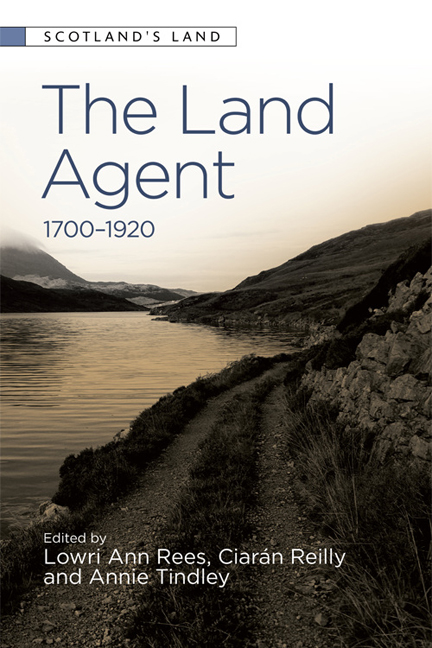Book contents
- Frontmatter
- Contents
- List of Figures
- Acknowledgements
- Notes on the Contributors
- Map of the British and Irish Isles
- Introduction
- Part I Power and its Constructions on Landed Estates
- Part II The Transnational Land Agent: Managing Land in the Four Nations and Beyond
- 4 Divisions of Labour: Inter-managerial Conflict among the Wentworth-Fitzwilliam Agents
- 5 The Courtown Land Agents and Transnational Estate Management, 1850–1900
- 6 Peter Fairbairn: Highland Factor and Caribbean Plantation Manager, 1792–1822
- Part III Challenges and Catastrophe: The Land Agent under Fire
- Part IV Social Memory and the Land Agent
- Postscript
- Index
6 - Peter Fairbairn: Highland Factor and Caribbean Plantation Manager, 1792–1822
from Part II - The Transnational Land Agent: Managing Land in the Four Nations and Beyond
Published online by Cambridge University Press: 11 August 2018
- Frontmatter
- Contents
- List of Figures
- Acknowledgements
- Notes on the Contributors
- Map of the British and Irish Isles
- Introduction
- Part I Power and its Constructions on Landed Estates
- Part II The Transnational Land Agent: Managing Land in the Four Nations and Beyond
- 4 Divisions of Labour: Inter-managerial Conflict among the Wentworth-Fitzwilliam Agents
- 5 The Courtown Land Agents and Transnational Estate Management, 1850–1900
- 6 Peter Fairbairn: Highland Factor and Caribbean Plantation Manager, 1792–1822
- Part III Challenges and Catastrophe: The Land Agent under Fire
- Part IV Social Memory and the Land Agent
- Postscript
- Index
Summary
INTRODUCTION
A CLASS OF PROFESSIONAL land agents appeared later in Scotland than in England. Their role was to make recommendations based on rational study of the options and use of systematic methods to increase productivity. An early example of this new breed of men in the Highlands was Peter Fairbairn, who in 1792 was appointed chief factor of the Seaforth estates. These consisted of the island of Lewis, Lochalsh, Kintail and Glenshiel in Wester Ross and scattered lands in Easter Ross. He was based at the family seat, Brahan Castle near Dingwall, where he acted also as secretary to the proprietor, Francis Humberston Mackenzie of Seaforth. Seaforth had been profoundly deaf from childhood and Fairbairn developed an ability to support and work effectively with his employer. What other expertise did he bring? He was not a Highlander nor a Gaelic speaker. However, proprietors often thought that, if a factor was not native, he would be less vulnerable to local rivalries, and thus his authority would be increased. Fairbairn was born in 1762 at Smailholm, Roxburghshire, where runrig lands had been divided by 1740 and let to one sixth of the original number of tenants. It seems likely that Peter's father John Fairbairn (born 1714) was one of these new tenants. One of John's other sons, Andrew, became a tenant farmer on the Seaforth estate.
Peter, therefore, came to Ross-shire with a knowledge of the improved agriculture of south-east Scotland. In the spring of 1794 Seaforth purchased the small estate of Moy, near Brahan. Fairbairn commented, ‘I would wish to see a rental and survey of the lands, which would show what may rationally be expected from improvements, and in what manner it could be laid out most advantageously in commodious farms.’ At about the same time, he recommended that the unimproved farm of Dunglust, also near Brahan, should be enclosed and the existing tenants removed to ‘make an excellent farm fully equal to the stock of most tenants’. He demonstrated that he had no particular sympathy for Highland small tenants by suggesting that the Dunglust people ‘will never become better and have an unpleasant appearance’.
- Type
- Chapter
- Information
- The Land Agent , pp. 109 - 130Publisher: Edinburgh University PressPrint publication year: 2018



